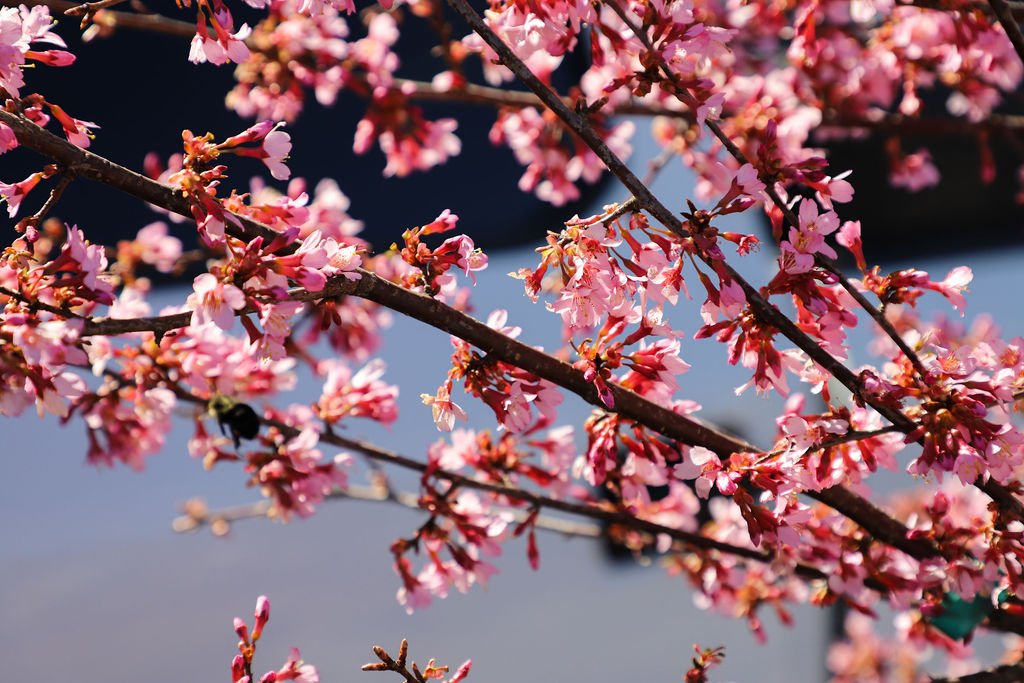Branching Out: The Ultimate Guide to Adding Trees to Your Landscape
Trees are a great addition to any landscape, providing shade, beauty, and even fresh fruit. But with so many different types of trees out there, it can be overwhelming to decide which ones to plant in your yard. Our tree experts have put together this guide to help you narrow your choices, select the right tree for your property, and ensure that it grows and thrives!
Types of Trees
What are you looking for in a tree? Do you want shade? Privacy? Aesthetic appeal? Before you go shopping for a tree, decide what type of tree you’re looking for. Main categories of trees include:
Shade trees: These trees are great for providing shade and cooling your property during hot summer months. Examples include maple, oak, and zelkova trees.
Flowering trees: These trees are known for their beautiful blooms in the springtime and can add a pop of color to your landscape. Examples include cherry, dogwood, and magnolia trees.
Fruit trees: If you're a fan of fresh, homegrown fruit, then fruit trees might be a great addition to your yard. Examples include apple, peach, and pear trees.
Evergreen trees: These trees keep their color year-round and are great for providing privacy and a green backdrop to your property. Examples include pine, spruce, and arborvitae.
Ornamental trees: These trees are often smaller in size and are grown for their unique or interesting features, such as unusual bark or interesting foliage. Examples include Japanese maple, birch, and weeping trees. .
Things to Consider
While there are many tree varieties, the tree you choose should be well-suited for the specific location of planting. Make sure to consider:
Climate: Research which trees thrive in your area and consider factors such as temperature, humidity, and rainfall. Sussex County, NJ is in climate zone 6, and at Farmside Gardens, we can help you choose a tree that is well suited to our local climate.
Soil Type: Consider the type of soil in your yard, as certain trees may require specific soil-types to thrive. If you have clay soil, for example, you might consider planting a tree that is tolerant of heavy, compacted soil, such as a red maple or a river birch. Avoid planting trees in areas with poor drainage, which can make trees more susceptible to root rot and other diseases.
Size: Consider the size of the tree you want to purchase. You don't want a tree that will outgrow its space and require frequent pruning. Determine the maximum height and width of the tree before making your purchase, and consider how the tree will look and fit in your selected location as it matures
Pollination Requirements: If you're planting fruit trees, it's important to select two or more varieties that bloom at the same time and are compatible for cross-pollination. This is important, because without the correct cross-pollination, trees will fail to bear fruit! The staff at Farmside Gardens can help you select the appropriate cross-pollinators if you’re considering fruit trees.
When to Plant
In general, the ideal time to plant trees is during the dormant season, which is typically in the fall or early spring when the tree is not actively growing. Planting during the dormant season allows the tree to establish its root system before the demands of new growth and summer heat stress the tree. In addition, planting during the dormant season can reduce the risk of transplant shock and increase the chances of successful growth and survival.
However, it's important to keep in mind that some types of trees may have different planting requirements. For example, fruit trees are often planted in the spring to coincide with their bloom period and encourage pollination. Trees that are grown in containers can be planted at any time of year, but it's important to water them regularly and provide proper care to ensure successful growth.
Planting & Caring for your Tree
When purchasing a tree, it's important to choose one that is healthy and disease-free. Look for a tree with healthy foliage, a strong trunk, and no signs of disease or insect infestation. It’s also important to research the specific planting and care instructions for that particular species. Finally, it's important to purchase your tree from a reputable source. Consider purchasing from a local nursery or garden center (like Farmside Gardens!) as they can provide valuable advice on planting and care instructions.
Care instructions for trees vary, but you should be sure to consider:
Watering Needs: As a general rule, aim to water your newly transplanted tree with at least 1 inch of water per week. Rather than watering a little bit every day, it's better to water deeply but infrequently. This encourages the roots to grow deeper into the soil, which helps the tree establish itself more quickly. However, it's important to adjust your watering schedule based on your specific tree, soil, and weather conditions.
Fertilizing: Wait at least 6 to 8 weeks after planting before fertilizing to avoid damaging the young roots of the tree. When it comes time to fertilize, we recommend checking in with experts at a garden center to select the right mix for your specific variety.
Pruning: Pruning is an important aspect of tree care, but it's not always necessary to prune trees immediately after planting. In fact, in most cases, newly planted trees should not be pruned right away. Newly planted trees require time to establish their root systems and become established in their new environment. Pruning immediately after planting can stress the tree and interfere with its ability to grow and establish. It's generally recommended to wait at least one to two years before pruning a newly planted tree.
Ask Questions!
Planting a tree can be a pretty big investment! At Farmside Gardens, we’re happy to answer your questions to help ensure your tree thrives. Contact us through our website, or call to ask questions.

